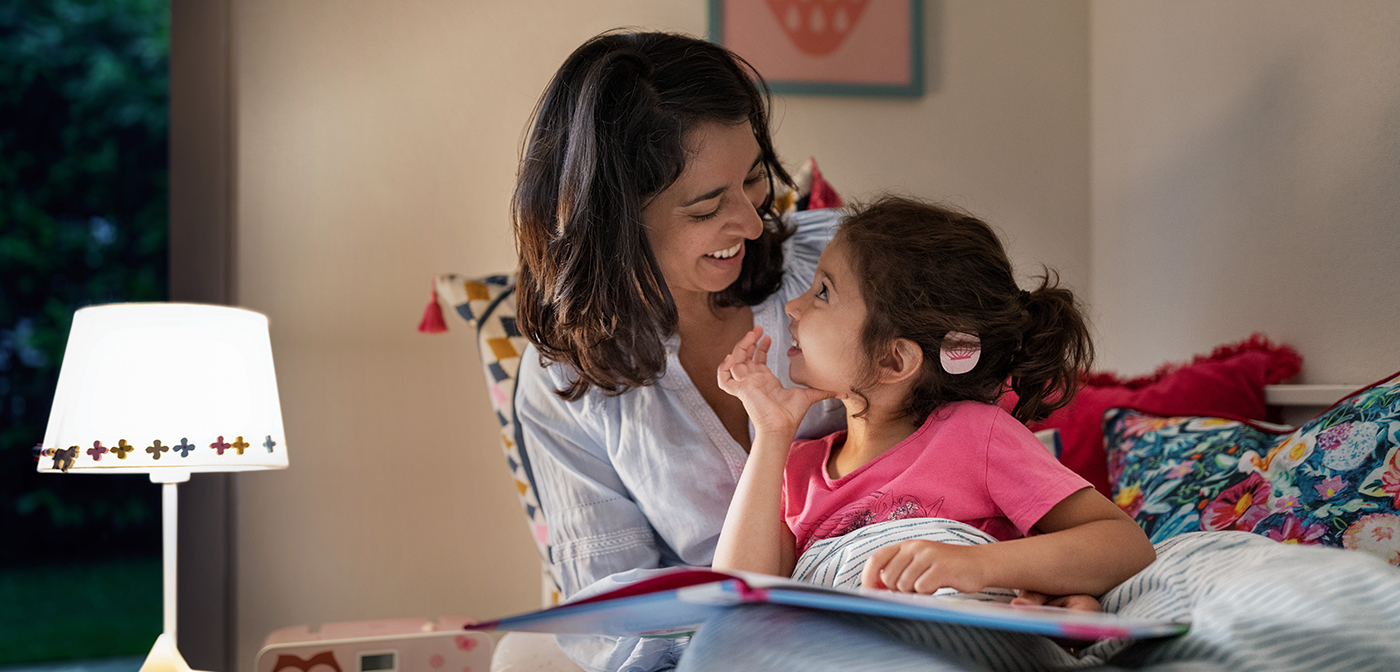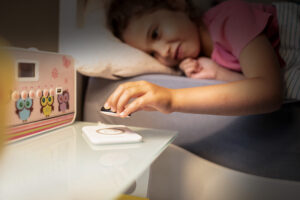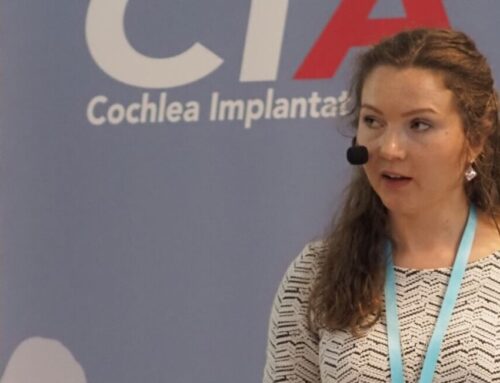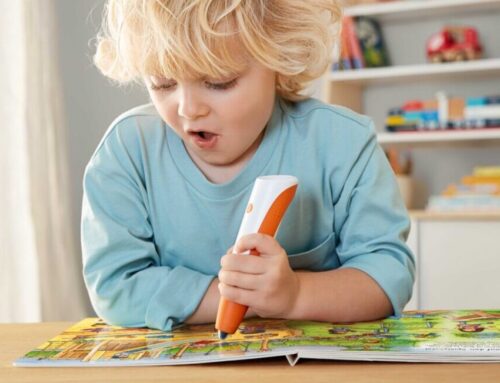Tips for parents on how to deal with their child’s cochlear implant
Respectful handling of the cochlear implant right from the start is important! How parents can support their child in accepting and using their hearing aids and implants.
Ulrike Berndorfer

Receiving a cochlear implant enables your child to learn how to hear. How children react to the new hearing support can vary. Children react sensitively to their parents' feelings and moods. If the little ones sense that mom and dad are not sure about the hearing systems, they quickly reject them. The parents' conviction: "My child needs their hearing aids", on the other hand, gives the child a sense of security.
Children also discover and examine their hearing aids. This is particularly typical when a child is also getting to know their body. Adults should react to this as calmly as possible: accept the devices with little emotion and use them again after a short break. It is often helpful to distract the child, for example by putting something exciting in their hands.
If a child throws away their hearing aids, it is a good idea for the adult to let the child place the devices in their open hands. A neutral "Thank you!" motivates the child to hand over their hearing aids to the adult.
A good day is about to begin...

When the hearing aids are put down for charging in the evening, they should have a permanent place. ©Daniel Zangerl
The hearing aids should have a fixed place that your child will get to know over time: this could be a specific box on the kitchen shelf, for example. This avoids the hearing aids being put away in random places and you having to invest time and energy in searching for them. Even young children observe the processes involved in removing and putting away hearing aids: They then look for their hearing aids there again to claim them and then also put them on.
Praise your child when the hearing aids are in place. Rejoice with them that they can now hear: "That's great, now you can hear something! Bravo! That's nice!" The positive mood during the insertion is transferred to your child and they associate the hearing aids with joy, affection and confirmation. You can also make a certain song a ritual by singing it whenever the hearing aids are inserted. Children love music and listen attentively.
Strengthen confidence and draw strength
Visiting an audiologist, doctor, speech therapist and other professionals: The focus is always on your child's ears. A lot of trust is demanded of the child! It takes empathy and positive experiences to build up this trust.
You can support your child in this: for example, by playing finger and body games with them from an early age, which positively accompany touching and stroking their ears and face. Other caregivers - grandparents as well as older siblings - can also pick up on these impulses and try them out with your child. This will help your child to learn that touching the face means affection and fun.
Learning is exhausting, even learning to hear. Children have to process the many auditory impressions and often tire quickly, especially at the beginning of a hearing aid. Build in listening breaks by consciously reducing ambient noise and offering your child time to withdraw.

Cochlear implants are an indispensable part of the child. ©Daniel Zangerl
The hearing aids are part of your child!
Your child's hearing aids belong to your child. They are his or her property - in fact, they are part of your child. Every time they are removed, the child's hearing perception of their surroundings is interrupted. For us hearing people, this sensation is difficult to understand, as we cannot simply "switch off" the sense of hearing. This makes it all the more important to treat people who can only hear through this technical marvel with consideration and sensitivity.
Therefore, make your child aware of this before you remove their CI, for example to check it or replace the battery. Prepare your child so that they can prepare themselves emotionally. For example, you can point to their ears and explain that you will be removing the CIs.
Strengthen appreciation and a sense of responsibility
Children will soon be able to remove, hand over and then put back on their CIs independently. Support your child in this independence: let them put on their coil independently. When you ask your child to remove the device and hand it back to you, wait calmly for them to comply. Involve your child in the daily care, technical maintenance and care of the CIs.
Children love bright colors and funny motifs. The manufacturer MED-EL, for example, offers colorful variations when selecting a new audio processor - for initial fitting and upgrades - as well as during use when changing the coil and microphone covers. Interchangeable pattern covers are also available for the coil of BTE processors and for the single-unit processors. These covers are not expensive and can be easily replaced if necessary; the microphone and single-unit covers should even be replaced regularly!
Allowing a child to choose the color or pattern for the cover or for a new system usually increases their appreciation and enjoyment of the hearing aids. If you missed this opportunity during the last change: No need to worry! Even existing systems can be pimped up with adhesive design foils for little money.
The meaning of names and designations
Parents name hearing aids very differently. Think about which type of name is meaningful for your child. The correct name "CI" supports the medical-technical reference and the child learns to name their hearing aids correctly right from the start. The family environment also gets used to the term "cochlear implant" from the beginning and can then pass on its experience and knowledge to other people.
People learn to become familiar with the term "CI" in their everyday lives at home, kindergarten, school, work and among friends: This supports the reference and ultimately the social experience value as well as the integration process in society.






